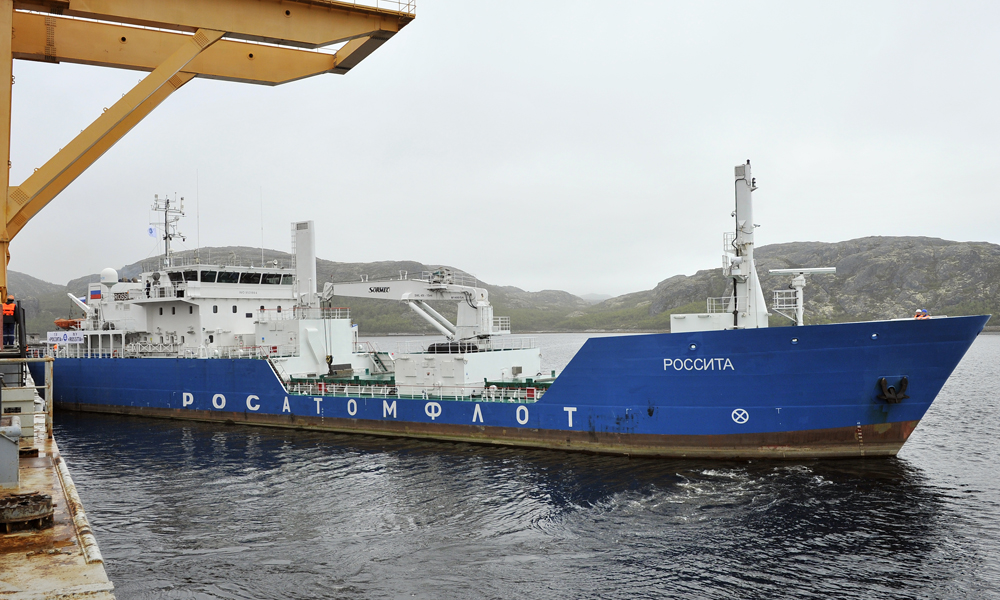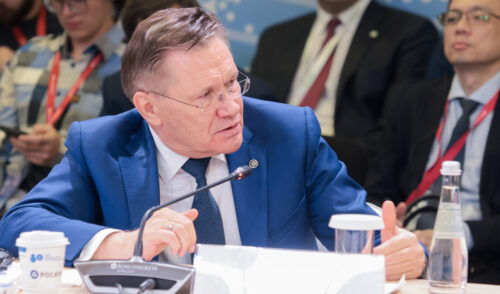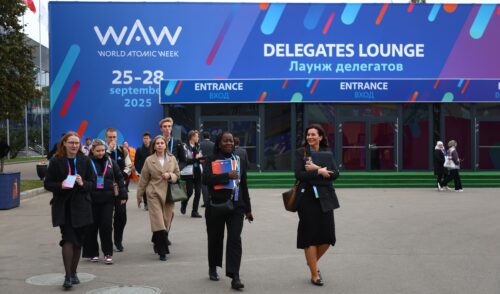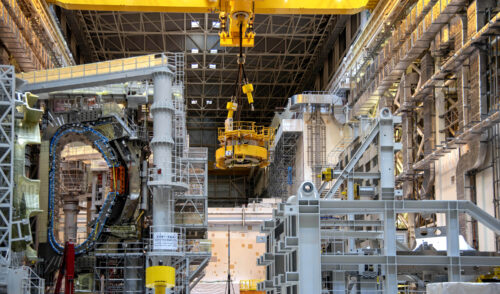
No Borders for Nuclear Safety
back to contentsThis landmark event took place in late June in the Murmansk Region. The first batch of SNF was sent on board the Rossita container ship for reprocessing. The vessel is meant for transportation of the spent nuclear fuel and internals of decommissioned nuclear submarines from the Russian Navy coastal bases in North-West Russia. The ship was built by the Fincantieri company at the Muggiano Shipyard in La Spezia, Italy. The construction was financed by Italy’s Ministry of Economic Development under the Russian-Italian intergovernmental agreement on disposal of decommissioned Russian nuclear submarines and safe management of radioactive waste and spent nuclear fuel.
The transportation of the first batch of SNF is a remarkable event, which exemplifies successful international cooperation in solving the complex problem of ‘nuclear legacy’ left in North-West Russia, raising nuclear and radiation safety, and improving the environmental situation. “There are no borders for nuclear and radiation safety,” said Rosatom CEO Alexei Likhachev. “Our foreign partners share this idea.” RosRAO and Rosatomflot are starting the key stage of the operations at Andreev Bay. Rosatomflot’s Rossita will carry the first flasks with spent nuclear fuel to the Mayak reprocessing facility.
The SNF and RAW management facilities and the engineering infrastructure were constructed under the sponsorship of the Industrial Decommissioning of Weapons and Military Equipment 2011–2020 federal target program and in cooperation with the governments of the UK, Norway, Sweden, Italy, the European Commission and the NDEP Support Fund (with the EU, Belgium, the UK, Germany, Denmark, Canada, the Netherlands, Norway, Russia, Finland, France and Sweden as stakeholders, and the European Bank for Reconstruction and Development as the trustee of the fund). Since 1999, more than 8 billion rubles have been invested in creation of infrastructure and improvement of the radiation situation at Andreev Bay. For this period, Russia has demolished 20 old facilities, built 17 new ones with the area totaling 18,889 sq m, deactivated at least 12,000 cub m of RAW, and constructed 11 facilities for biological protection and SNF transportation and management. This result was achieved by signing 121 international contracts, carrying out about 45 surveys and developing new technologies for safety improvement. The resulting waste management infrastructure will make for more than a threefold reduction in SNF removal times.
According to Anatoly Grigoriev, manager of the international remediation project at Rosatom, unique technologies were developed and tested for this effort. “The project involved the leading researchers from such countries as the UK, France, Germany and Japan, who worked together to solve complex problems,” he noted. Mr. Grigoriev said the safe nuclear fuel storage, handling and reprocessing methods developed for the facilities at Andreev Bay can further be replicated worldwide, particularly for mothballing nuclear plants, disposing their waste materials and removing accumulated nuclear waste, especially in the Arctic areas.




